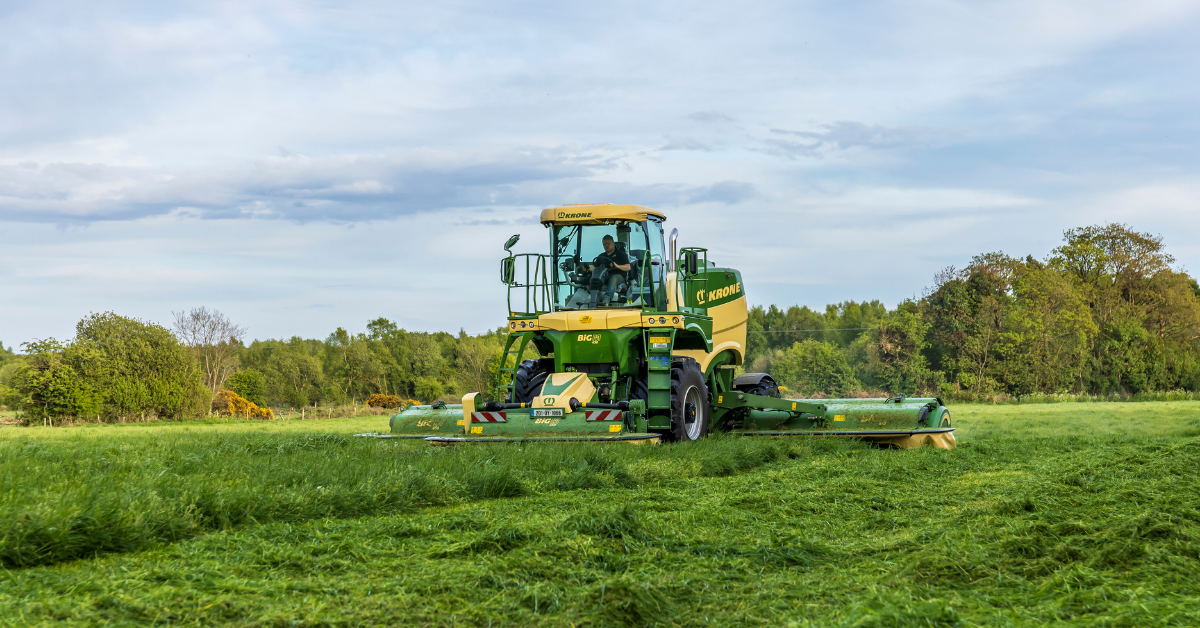
In most cases around the country, first cut silage is now secured. The 2021 silage harvesting season was a shadow of 2020, due to poor growth conditions in April and May. In general silage harvesting ran 10 days later than usual, which helped to bulk up crops but delayed the preparation for second cut.
Now, is a good time to revisit feed budgets for next winter. Calculate the yield from first cut and the deficit to be made up in second cut, possible yield from expected harvested bales and plan for a third cut if the need arises.
Nutrient management for second cut silage
Large quantities of Phosphorus (P) and Potassium (K) are removed in first cut silage. Now is the time to plan for your second cut, calculate possible offtakes which will determine your fertiliser requirements.
A typical second crop of grass silage yielding 3 tonnes DM/ha will require the following:
| Soil Index | Nitrogen (N) Kg/ha (units/ac) | Phosphorus (P) Kg/ha (units/ac) * | Potassium (K) Kg/ha (units/ac) |
| 1 | 100 (80) | 30 (24) * | 75 (60) |
| 2 | 100 (80) | 20 (16) * | 75 (60) |
| 3 | 100 (80) | 10 (8) | 75 (60) |
| 4 | 100 (80) | 0 | 0 |
*If build up rates of P were applied for first cut, then revert to Index 3 rates for the second cut. Source: Teagasc
Check your most recent soil analysis results to determine your soil index rate. Consult your adviser to interpret the results and make the necessary recommendations.
The good advice is to recycle slurry onto silage ground for two reasons, firstly because silage removes large quantities of P and K and secondly its ratio of P:K of 1:6 is ideal to replace removal rates. Use slurry analysis to determine its value. Take a representative sample following agitation and send it to an accredited laboratory to determine the DM percentage and P and K content.
The typical value of cattle slurry of 7% DM spread at 1000 gallons/ac is 5N 5P 30K. This N will only be 3 units at best, if spread in dry conditions on bare ground. However, by using Low Emission Slurry Spreading (LESS) rather than a splash plate you can increase N by a further 3 units.

Dealing with surplus grass
Grass growth rates are high in some areas with some reports as high as 90Kg/DM/ha. It is advisable to take out strong paddocks as bales once they are identified. This will quickly allow the paddocks to return into the grazing cycle. When taking out surplus grass as baled silage, it is important to replenish these paddocks as the amount of N, P and especially K removed can be substantial. According to Teagasc, a typical bale of silage weighing 800 Kg fresh weight or 200kg of dry matter (DM) contains 10 units of N, 1.6 units of P and 10 units of K or for every three bales removed, 1000 – 1500 gallons of good quality slurry or one bag of Target 0-7-30.
For farms with restrictions on P apply two bags of 19-0-15+S on subsequent rotation. This should be factored into your nutrient programme during the season.
In summary, identify your soil index, use slurry when available, calculate the value of slurry applied and apply the balance as inorganic fertiliser. In the absence of slurry, apply your full requirements as inorganic/chemical fertiliser.
From Teagasc research over many years, Sulphur (S) is identified as being deficient in up to 30% of grassland soils. It is recommended to apply S at 20 Kg/ha for each cut. For this reason, many of the Target fertiliser range carry sulphur as standard.
Target products most frequently used:
24-2.2-4.5 + S
27-2.5-5 + S CCF
24-2.5-10 + S
21-2.2-10 + S
19-0-15+S
SuperCAN CCF (27N 4S)
UreaMAX + S (38N 7S)
To view Target Fertilisers’ full range of grassland fertilisers, click here
Follow us on Twitter
Follow us on Facebook

